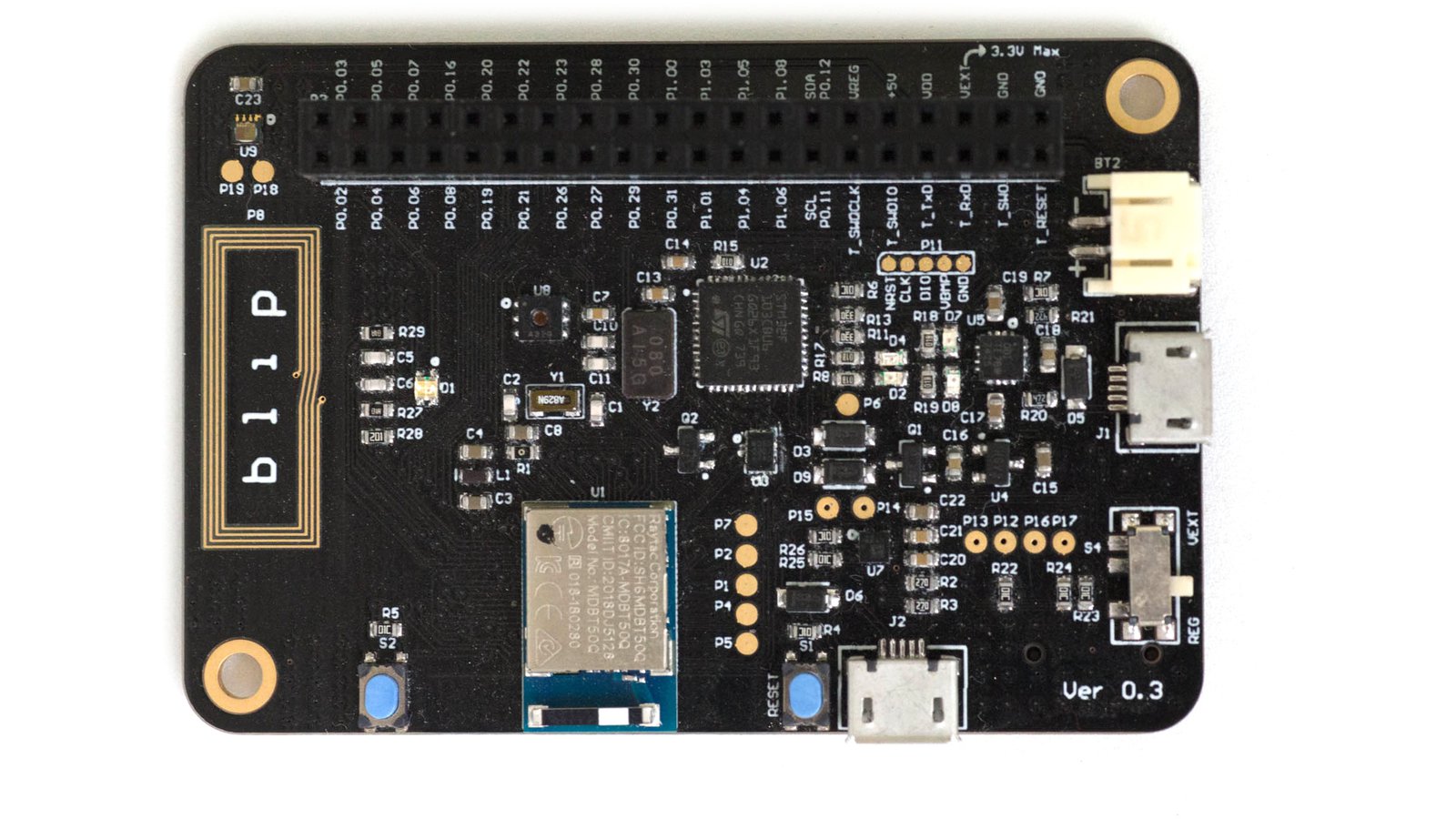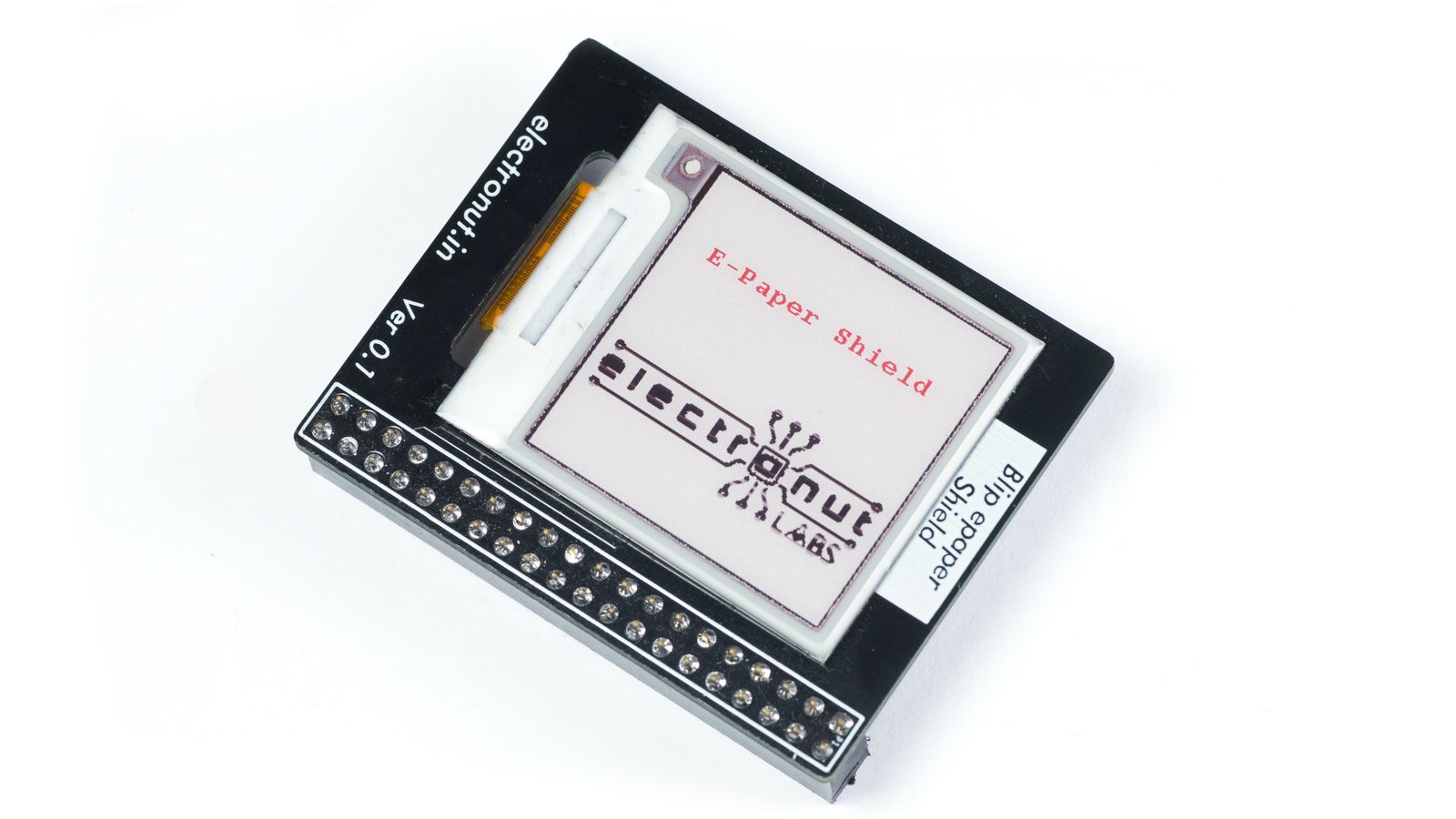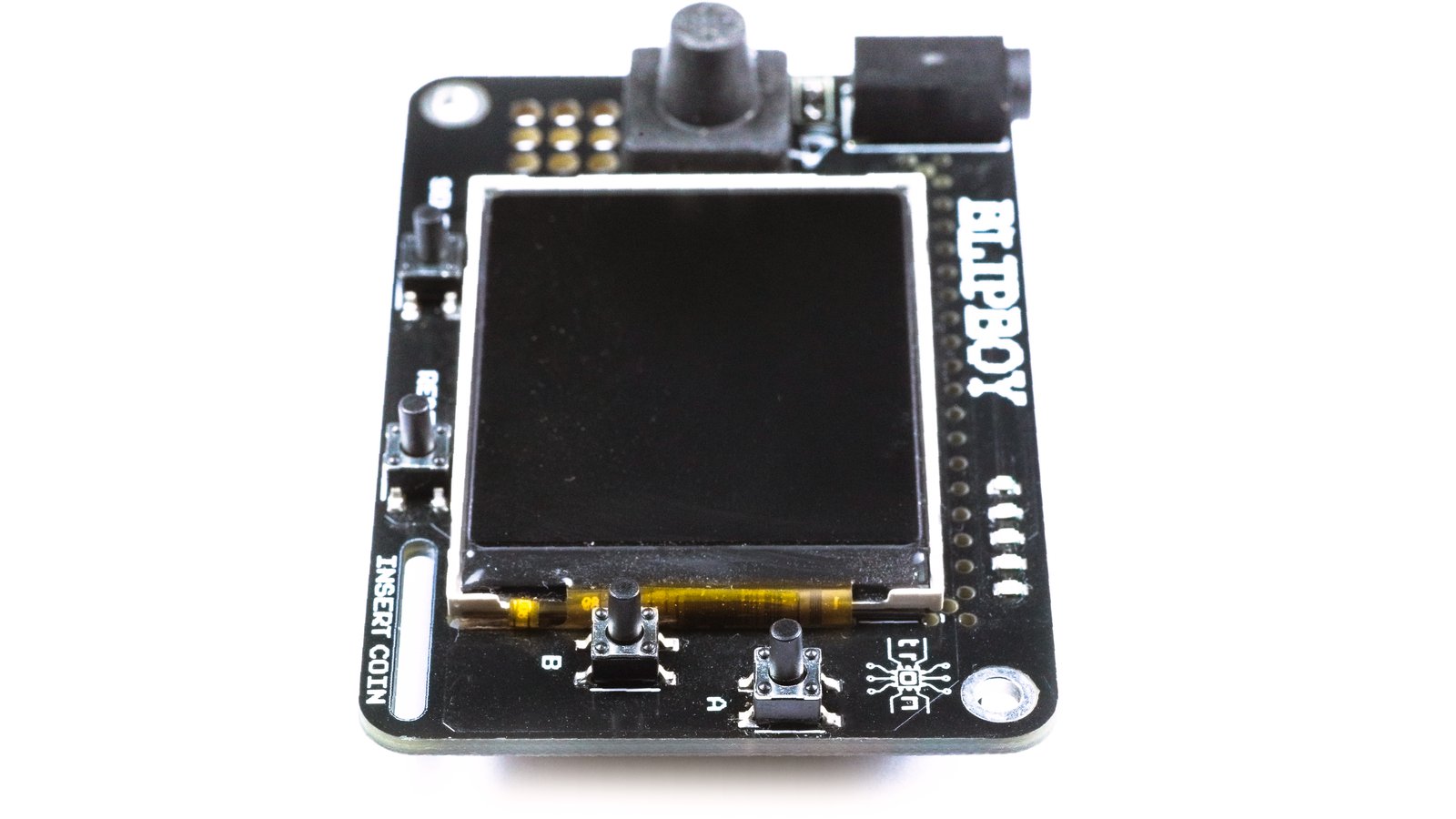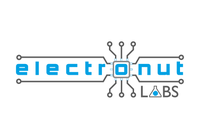Electronut Labs
Microcontroller Boards
Nordic Semiconductor
Electronut Labs
Microcontroller Boards
Nordic Semiconductor
Blip is a development board for Bluetooth Low Energy (BLE) and 802.15.4-based wireless applications, built around the Nordic Semiconductor nRF52840 SoC.
Blip has a Black Magic Probe compatible programmer and debugger built in, along with a temperature/humidity sensor, ambient light intensity sensor, and a three-axis accelerometer. It can be used to prototype very low power devices. It also has provisions for a microSD card slot, which makes it a complete and versatile development board.
Blip supports Nordic Semiconductor nRF5 SDK, Zephyr RTOS, Arduino and CircuitPython, so users can easily find resources to interface it with pretty much any hardware. There’s even an Android/iOS App and a Bluetooth web interface.
Maximum Input Voltage
Power Ratings
There are two shields available for Blip, the Blip E-paper Shield and the Blipboy Gaming Shield.
This shield can be plugged into Blip to convert it into a low-power display device.
Schematic: https://docs.electronut.in/blip/shields/e-paper/e-paper_shield.pdf
Documentation: https://docs.electronut.in/blip/shields/e-paper/
This shield can be plugged into Blip to convert it into a handheld gaming device!
Blip with the Blipboy shield can support CircuitPython, Arduino, Zephyr, etc. You can play (and make) games in Python for this. We already have one sample running and are working on more to come.
Schematic: https://docs.electronut.in/blip/shields/blipboy/schematic-blipboy.pdf
Documentation: https://docs.electronut.in/blip/shields/blipboy/
| Blip Board Labelled | |
|---|---|
| A. User button | H. LiPo battery connector |
| B. nRF52840 module (MDBT50Q) | I. LiPo charger (BQ24079RGTR) |
| C. nRF RESET | J. Black Magic Probe programmer (STM32F103CBU6) |
| D. nRF USB | K. Temp/Humidity sensor (S170065-A20) |
| E. Three-axis accelerometer (LIS2DH12TR) | L. RGB LED |
| F. Power selection switch | M. Ambient light sensor (LTR-329ALS-01) |
| G. Programmer / debugger USB | N. NFC antenna |
Blip’s schematic, BOM, extensive documentation, and a wealth of example projects are available on our documentation portal.
Sample firmware, datasheet, images, etc. can currently be found in this GitLab repository.
Datasheet PDF: https://docs.electronut.in/blip/blip_datasheet.pdf
Schematic PDF: https://docs.electronut.in/blip/blip_v0.3_schematic.pdf
Length: 70 mm
Width: 47 mm
Height: 8.8 mm (11.75 mm with pins)
See how Blip compares to other development boards also using the nRF52840 semiconductor.
| Blip | Makerdiary nrf52840-mdk | nRF52840 Feather | Reel board | Pro nRF52840 mini | |
|---|---|---|---|---|---|
| Manufacturer | Electronut Labs | Makerdiary | Adafruit | Phytec | Sparkfun |
| Debugger | Black Magic Probe | CMSIS-DAP | No | CMSIS-DAP | No |
| NFC antenna | PCB antenna | No | No | No | No |
| MicroSD slot | Yes | No | No | No | No |
| QSPI flash | No | 8 MB | 2 MB | No | No |
| Battery conn. | JST | No | JST | AAA | JST |
| Accelerometer | Yes | No | No | Yes | No |
| Light sensor | Yes | No | No | Yes | No |
| Temp/Humidity | Yes | No | No | Yes | No |
| Display | E-paper shield available | No | No | E-paper | No |
| LEDs | RGB | RGB | Red, Neopixel | RGB | Blue |
| Price (USD) | $55 | $39 | $24.95 | $54.9 | $29.95 |
Blip’s on-board nrf52840 SoC chip is very capable. We have made it very easy to get started with Blip and develop many kinds of applications and projects. The following projects use Arduino, Zephyr RTOS and nRF SDK.
The default firmware collects data from all onboard sensors (temperature/humidity, light, and accelerometer) and sends it over BLE (Bluetooth Low Energy) to the Electronut Labs mobile app. The app can be used to connect to the device and see the sensor data.
We also have a web Bluetooth demo that shows the data and plots directly in a browser. You can see more details about this on this page: https://docs.electronut.in/blip/code/default_fw/.
This project is about interfacing an 8x8 RGB LED matrix with Blip to transfer and display LED patterns on the matrix over BLE.
Arduino IDE is used for this project, and you can talk directly to Blip using web Bluetooth.
You can see more details on this page: https://docs.electronut.in/blip/code/projects/led_matrix/.
In this project, we have a Blip connected to an analog soil moisture sensor. The firmware, which is written with Zephyr, updates the value in a BLE characteristic which is read periodically by a Node.js script running on a RaspberryPi. This scripts puts the data in a MongoDB instance and shows it in a web UI.
You can see more details here: https://docs.electronut.in/blip/code/projects/plant-moisture-monitor/.
In this project, we analyze mechanical vibrations of a machine by attaching Blip to it and recording its vibrations using the on-board accelerometer. We configure the LIS2DH12 accelerometer in stream mode, so that it is continuously sending data to Blip using the accelerometer’s FIFO and interrupts. Data is recorded in a .csv file on a microSD card, and it is later analyzed with a Python script, by calculating a moving FFT.
You can see more details here: https://docs.electronut.in/blip/code/projects/Vibration_analysis/.
We manufactured Blip and the shields with Elecrow in Shezhen, China. We have been using Elecrow as a manufacturing partner for our hardware for the past couple of years, and we have been happy with their service and the quality of the production hardware.
They tested the boards using a production test jig we made for Blip to check board assembly, programming, and all sensors. The test will upload a functional testing firmware to Blip and run all diagnostics; the status for pass/fail is shown on the OLED screen.
Boards manufactured by Elecrow will be shipped directly to Crowd Supply, who will then ship out the boards to the backers. For more information on Crowd Supply fulillment, please see their Guide on ordering, paying, and shipping.
There are always risks associated with manufacturing hardware. However, we have a solid track record of creating interesting hardware for makers, we have experience selling internationally on Tindie as well as Crowd Supply, and we’ve consistently delivered our products on time. Any delays or challenges will be clearly communicated with backers through updates.
Electronut Labs has strong maker roots. Our first hardware product snapVCC was successfully crowdfunded right here at Crowd Supply. These days, we take on a lot of consulting work on embedded systems - especially in the area of low power wireless technology. We wanted to make a board that we would love to use ourselves. Something which would let us explore the latest BLE and 802.15.4 technology, would be easy to program and debug, and would already have sensors built in. This is how Blip came to be.
"This little module makes it easy to build Bluetooth mesh-networked sensors and more."
"It is able to help you easily start your next IoT Development using BLE technology."
"Aimed at prototyping and projects in a wide variety of BLE and 802.15.4, wireless application scenarios."
"Con dos encapsulados posibles para necesidades concretas, esta placa de desarrollo con sensores, NFC y Bluetooth otorga a los desarrolladores una gran flexibilidad."
Produced by Electronut Labs in Bangalore, India.
Sold and shipped by Crowd Supply.

One Blip board.

One E-paper Shield - Blip not included.

One Blipboy Gaming Shield - Blip not included.

Electronut Labs started as a blog on Electronics and Programming. After a long career in the software industry, Mahesh Venkitachalam wanted to return to his childhood interest in building electronic gadgets. The projects and articles in the blog gained in popularity, culminating in a book with elements of programming and hardware (Python Playground, No Starch Press).